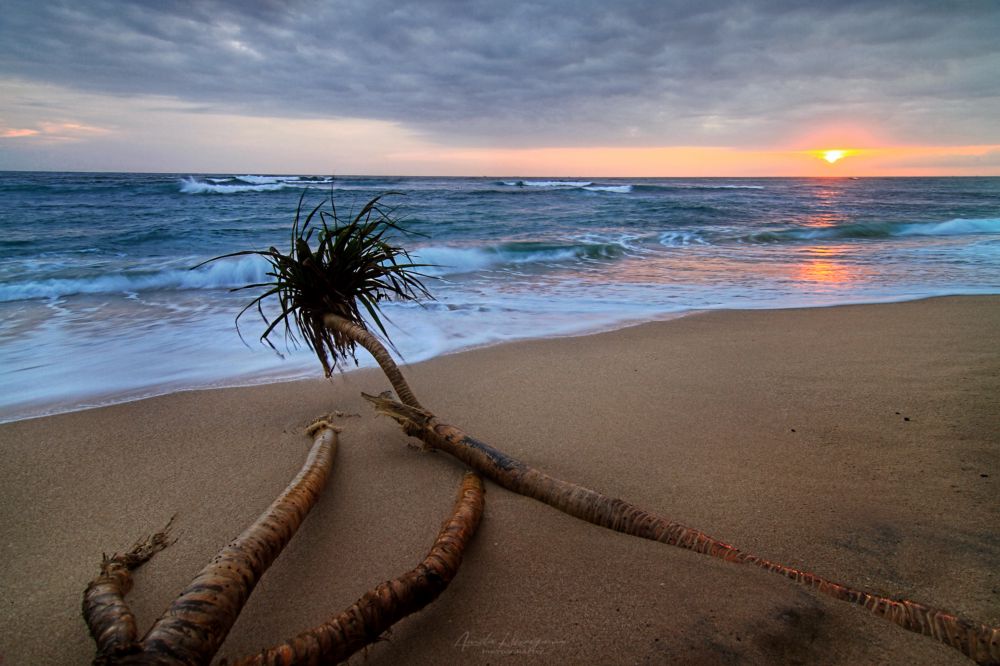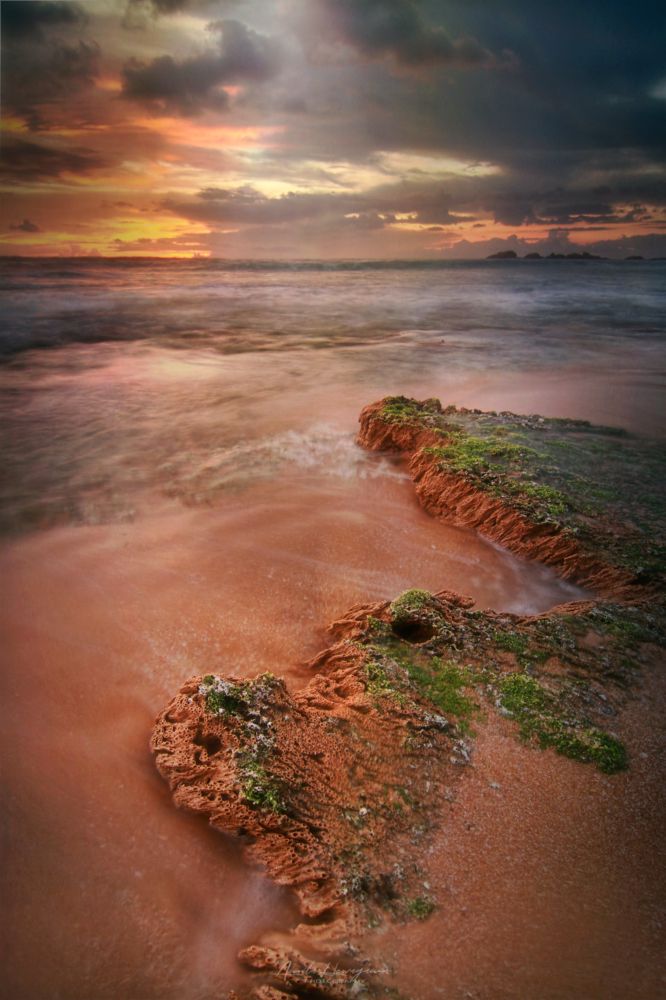Seascape photography offers the chance to capture the dynamic beauty of the coast. These ten essential tips will guide you in creating breathtaking images of the ocean's power and serenity.
01.Choose the Right Location

Koggala Beach - an ideal location with unique rock formations and captivating skies.
- Look for seascape photography spots with captivating skies, unique rock formations, and pristine waters.
- Consider the time of day and season when planning your shoot.
- Be sure to check the weather forecast and tide charts before you go.
- The best time to shoot seascapes is during the golden hours of dawn and dusk, when the sun's low angle creates beautiful, soft light.
- If you're shooting in the middle of the day, try to find a spot with dappled shade to create interesting patterns of light and shadow or shoot on an overcast day.
- Be sure to check the weather forecast before you go, as bad weather can impact your shoot.
- Tide charts can help you to plan your shoot, revealing interesting foregrounds at low tide or dramatic waves at high tide, and ensure safety.
02.Optimal Lighting

Hikkaduwa Beach at golden hour, demonstrating soft, enhancing light.
- The golden hours of dawn and dusk are the best times for seascape photography.
- The low angle of the sun during these times creates beautiful, soft light that can enhance the colors in your photos.
- If you're shooting in the middle of the day, try to find a spot with dappled shade to create interesting patterns of light and shadow. An overcast day can also provide beautifully diffused light.
- You can also use a polarizing filter to reduce glare on the water and wet rocks, and enhance the colors in your photos.
03.Steady Tripod
- A sturdy tripod is essential for seascape photography, especially if you're using a slow shutter speed to capture water movement or shooting in low light.
- A tripod will help to prevent camera shake and ensure that your photos are sharp and clear.
- If you don't have a tripod, try using a beanbag or other stable surface like a rock to support your camera. Ensure it's secure from waves.
04.Wide-Angle Lens
- A wide-angle lens is perfect for capturing the vastness of the ocean and the surrounding landscape.
- A wide-angle lens will also help you to get more of the sky in your photos, which can be important for capturing the beautiful colors of the sunrise and sunset.
- If you don't have a wide-angle lens, you can try using a fisheye lens for a more dramatic and unique perspective, or stitch multiple photos into a panorama.
05.Composition Exploration
- There are no hard and fast rules when it comes to seascape composition, but there are a few things to keep in mind.
- Try to use leading lines (like the edge of the water, rocks, or piers) to guide the viewer's eye into the photo.
- Frame your shots with interesting foreground elements, such as rocks, driftwood, or patterns in the sand.
- One popular composition technique is to use the rule of thirds, dividing the frame and placing the main subject or horizon at an intersection or along a line.
- Another technique is using leading lines, which guide the viewer’s eye naturally through the photo towards the main subject.
06.Enhancing Filters
- Graduated ND filters can balance exposure between the bright sky and darker foreground, especially crucial during sunrise or sunset seascapes.
- Solid ND filters allow for longer exposures to create silky smooth water effects even in brighter conditions.
- Polarizing filters reduce glare from the water's surface and wet rocks, and significantly enhance colors and contrast in the sky and water.
07.Post-Processing Brilliance
- Use software like Adobe Lightroom and Photoshop to adjust color balance, contrast, and exposure for optimal impact.
- Enhance details in highlights and shadows, especially in dynamic coastal scenes.
- Add creative effects like HDR (High Dynamic Range) for scenes with extreme contrast, or carefully apply local adjustments to guide the viewer's eye.
08.Share Your Vision
- Share your captivating seascape photos on social media, your photography website, and relevant photography platforms.
- Entering competitions can provide valuable feedback, exposure, and recognition for your work.
09.Patience Pays Off
- Seascape photography often requires patience. Wait for the right light, the perfect wave, or a dramatic cloud formation.
- Observe the environment and anticipate changes to capture unique moments.
10.Tide Chart Insight
- Use tide charts to plan your sessions. Low tide can reveal interesting rock formations and tide pools, while high tide can bring dramatic crashing waves.
- Understanding tides is also crucial for your safety and ensuring a successful shoot without risking your gear.
With these tips and practice, you'll be well-equipped to capture the stunning and ever-changing beauty of the sea.